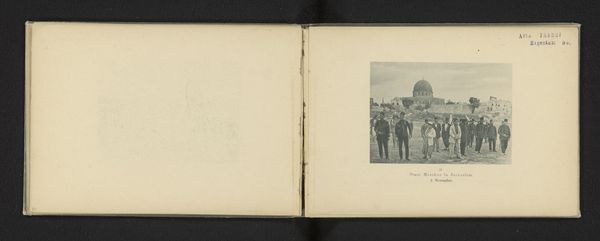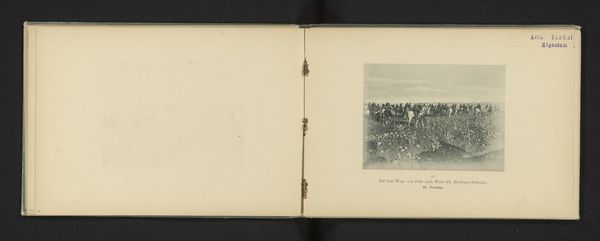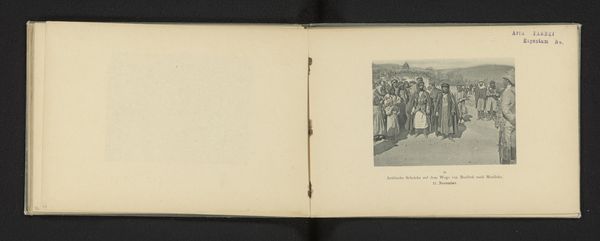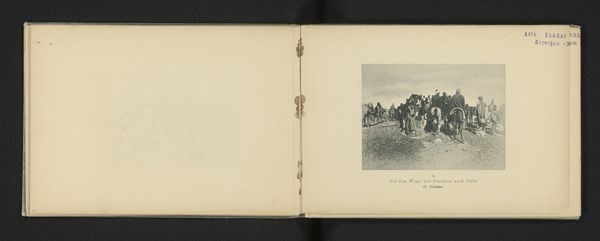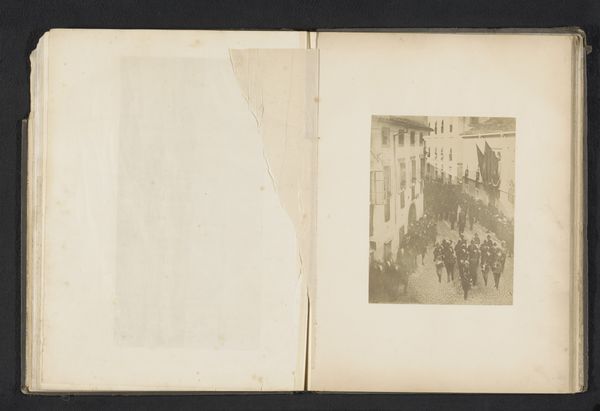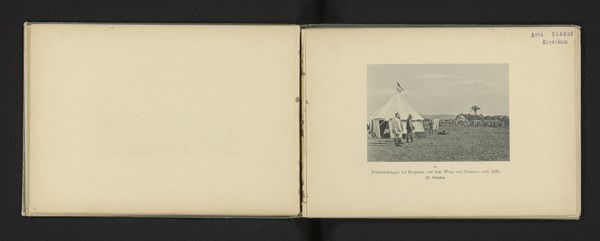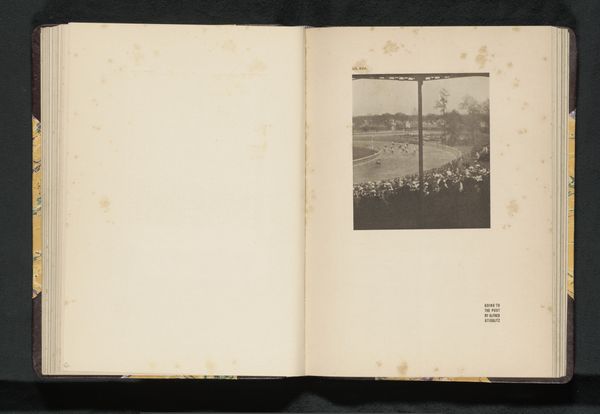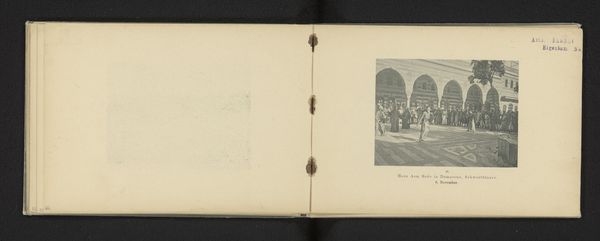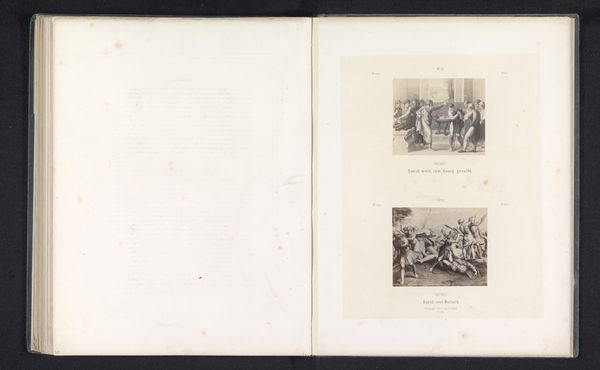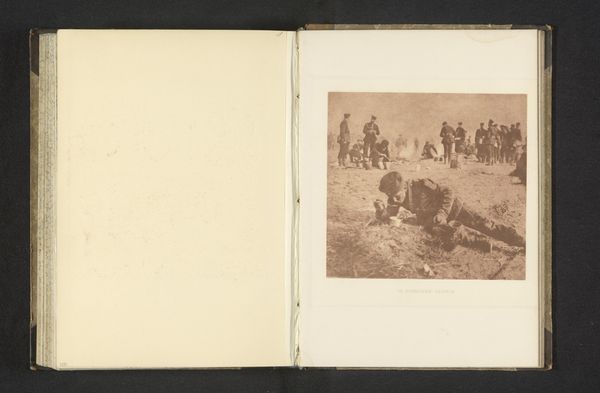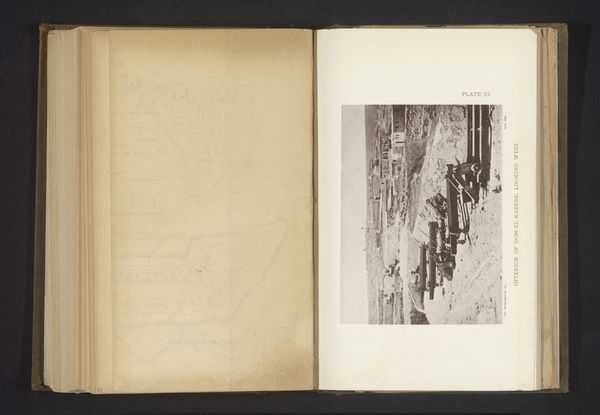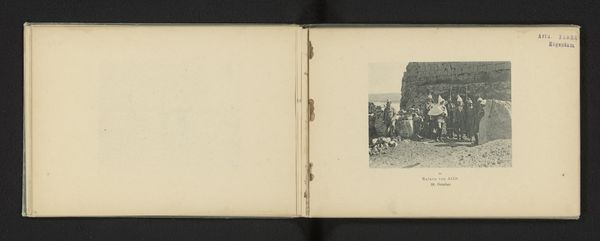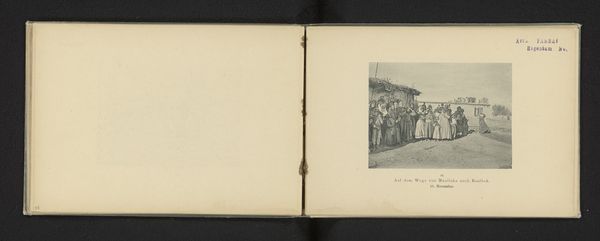
Reisgezelschap van keizer Wilhelm II van Duitsland op de Tempelberg in Jeruzalem, Israël before 1899
0:00
0:00
print, photography, gelatin-silver-print
# print
#
landscape
#
photography
#
orientalism
#
gelatin-silver-print
#
cityscape
#
history-painting
Dimensions: height 90 mm, width 119 mm
Copyright: Rijks Museum: Open Domain
Curator: The photograph before us, "Reisgezelschap van keizer Wilhelm II van Duitsland op de Tempelberg in Jeruzalem, Israël," which roughly translates to "Travel company of Emperor Wilhelm II of Germany on the Temple Mount in Jerusalem, Israel," captured sometime before 1899, offers a glimpse into a complex historical moment. Editor: My first impression is how stilted everything appears. A sort of forced formality permeates what I'd imagine would otherwise be a vibrant and bustling locale. Curator: It is an orientalist portrayal, undoubtedly, evidenced in both the landscape orientation and the staging of its figures; remember that photography then was rarely candid. It suggests power, a colonial gaze fixed upon a site of immense historical and religious significance. The gelatin-silver print almost lends it a veneer of… removal. Editor: The Temple Mount carries such immense weight—the collision of faiths and histories right there under Wilhelm’s feet. This image seems more about imposing his image, solidifying a moment of supposed German prestige rather than engaging with the spiritual heart of Jerusalem. You feel that chill, don't you? Curator: Absolutely. The very act of documenting the Emperor’s presence in Jerusalem carries layers of symbolic meaning. It's about visually asserting dominance, a historical flexing of imperial might projected onto sacred ground. The history painting aspect, I agree, leans more towards manufactured spectacle. Editor: The subjects themselves look almost uniformly drab compared to their vibrant backdrop—what colors they did have seem bleached, perhaps intentionally by the artistic approach? Their expressions, though not directly visible, I assume would hold little emotional engagement. Curator: We see how this historical photograph isn’t merely a record but a calculated statement—a propaganda piece, if you will, thinly veiled as documentary. Editor: It makes you wonder about all that we cannot see in the image. The people not pictured. The stories silenced by that imperial visit. A critical reminder of how photographs, even historical ones, demand our constant questioning and interpretation.
Comments
No comments
Be the first to comment and join the conversation on the ultimate creative platform.

